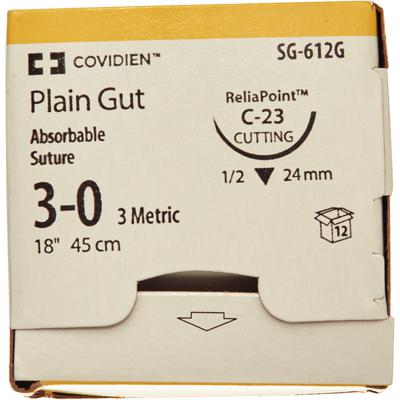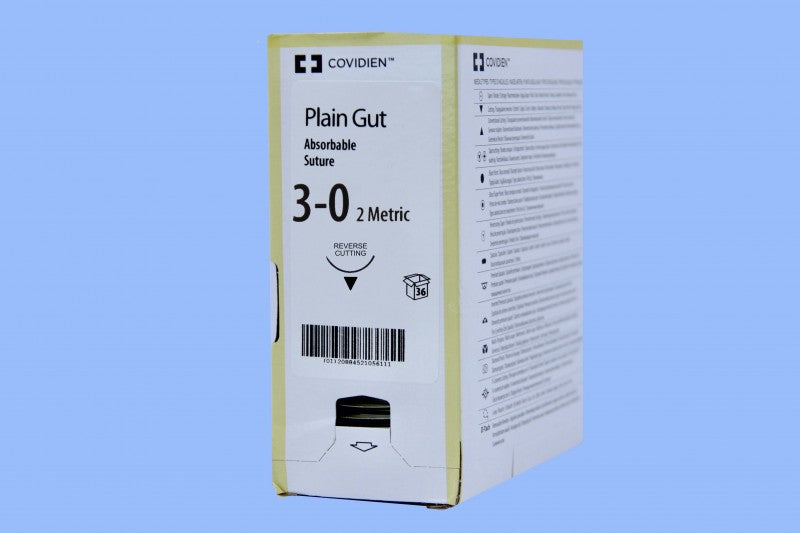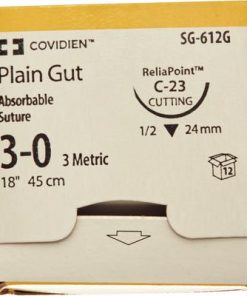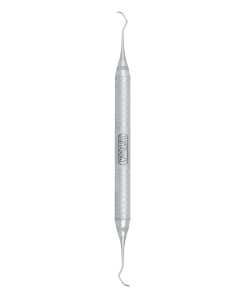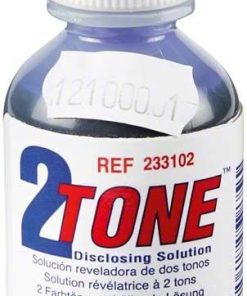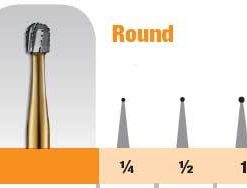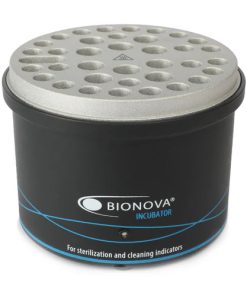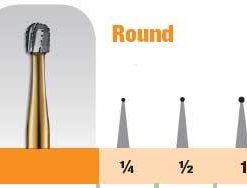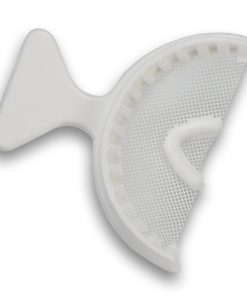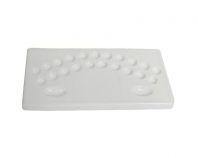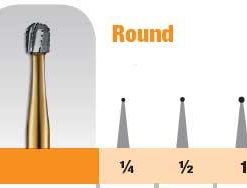Absorbable Surgigut Suture Plain Gut Covidien
$ 202,99 $ 81,20
Plain gut absorbable sterile surgical sutures are composed of purified connective tissue (mostly collagen) derived from the serosal layer of beef (bovine) intestines. They are packaged in a solution of 89% isopropanol, 10% water and 1% triethanolmaine.
The manufacture of catgut raw material, consisting of long ribbons of highly selected serosal tissue, ensures:
- Purity of collagen for optimal tensile strength and in-vivo performance
- Surface smoothness to facilitate knot run-down and knot strength, due to electronic polishing of each strand
Features
- Optimal tensile strength and in-vivo performance with mostly collagen purified connective tissue from the serosal layer of bovine intestines
- Packaged in a solution of 89% isopropanol, 10% water and 1% triethanolmaine
- Smooth surface for knot run-down, due to electronic polishing of each strand
- Indicated for use in general soft tissue approximation and ligation, including ophthalmic surgery, but not in cardiovascular or neurological surgery
Indications
Plain gut sutures are indicated for use in general soft tissue approximation and/or ligation, including use in ophthalmic surgery, but not in cardiovascular or neurological surgery.
Contraindications
The use of these sutures is contraindicated in patients with known sensitivities or allergies to collagen or chromium, as gut is a collagen based material and chromic gut is treated with chromic salt solutions.
Actions
PLAIN GUT sutures elicit a minimal acute inflammatory reaction in tissues characteristic of foreign body response to a substance. This is followed by gradual loss of tensile strength and suture mass, as the enzymatic process dissolves the surgical gut until it is completely absorbed.
Tensile Strength
Many variable factors may affect the rate of tensile strength loss. These include:
- Type of suture
- Presence of infection
- Tissue sites
Absorption
Absorption of PLAIN GUT sutures occurs by enzymatic process similar to the digestion of an animal protein by the body. Being enzymatic, the process is subject to different influencing factors (see above) and it is virtually impossible to indicate the exact designation of a consistent absorption time.
| Style | C-13, 3/8" Circle Needle, Size 3-0, Length 30", 36/Pkg, C-13, 3/8" Circle Needle, Size 4-0, Length 30", 36/Pkg |
|---|
Fast Shipping and Professional Packing
We can offer a variety of shipping options because of our long-term partnership with UPS FedEx DHL. Our warehouse personnel will pack each item according to our strict specifications. Your goods will go through an exhaustive inspection and securely secured prior to being shipped. We deliver to thousands of clients every day from all over the world. Our commitment to become the largest online retailer worldwide is demonstrated by this. Both Europe and the USA have distribution and warehouse centers.
Note: Orders that include more than one item will be assigned a processing date according to the item.
Before shipping, all ordered items will be thoroughly examined. The majority of orders will be delivered within 48 hours. The delivery time is estimated to be between 3 and seven days.
Returns
The stock market is always changing. It's not entirely managed by us since we're involved with several parties such as the factory and our storage. The actual inventory can fluctuate at any time. It is possible that you will not receive your purchase after it has been placed.
Our policy is valid for a period of 30 days. If 30 days have passed by since your purchase, unfortunately we can't offer you a return or exchange.
You are able to return an item if it is unused and still in the same state as when you first received it. It must also still be in the original package.
Related products
Uncategorized
Uncategorized
3% Polocaine Dental Mepivacaine HCl injection, USP – 1.8 ml Cartridge, 50/Pkg Dentsply
Uncategorized
Uncategorized
Uncategorized
Uncategorized
Uncategorized
Uncategorized
Uncategorized
Uncategorized
Uncategorized
Uncategorized
Uncategorized
Uncategorized
Uncategorized
Uncategorized
Uncategorized
Uncategorized
Uncategorized
Uncategorized
Uncategorized
